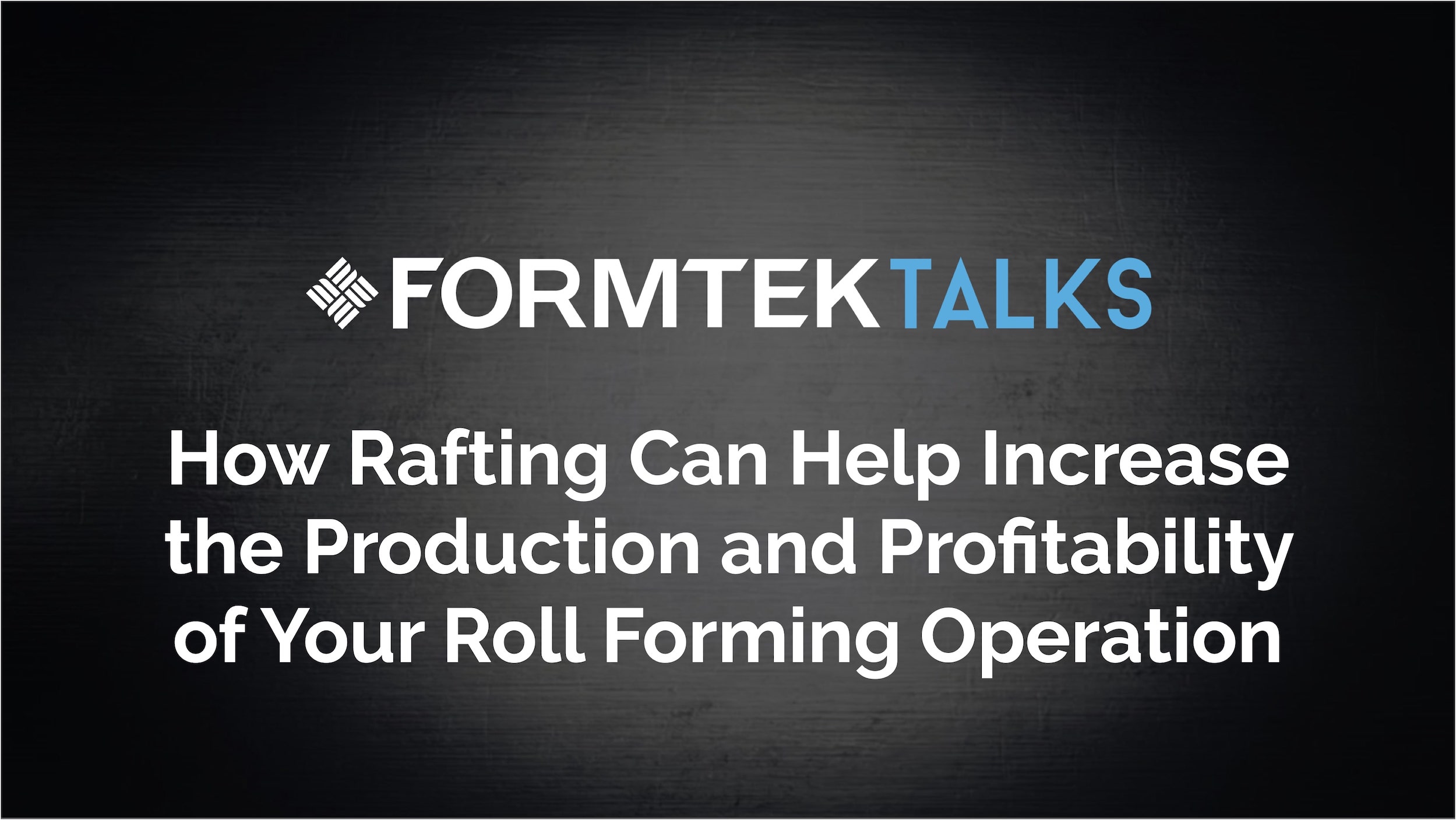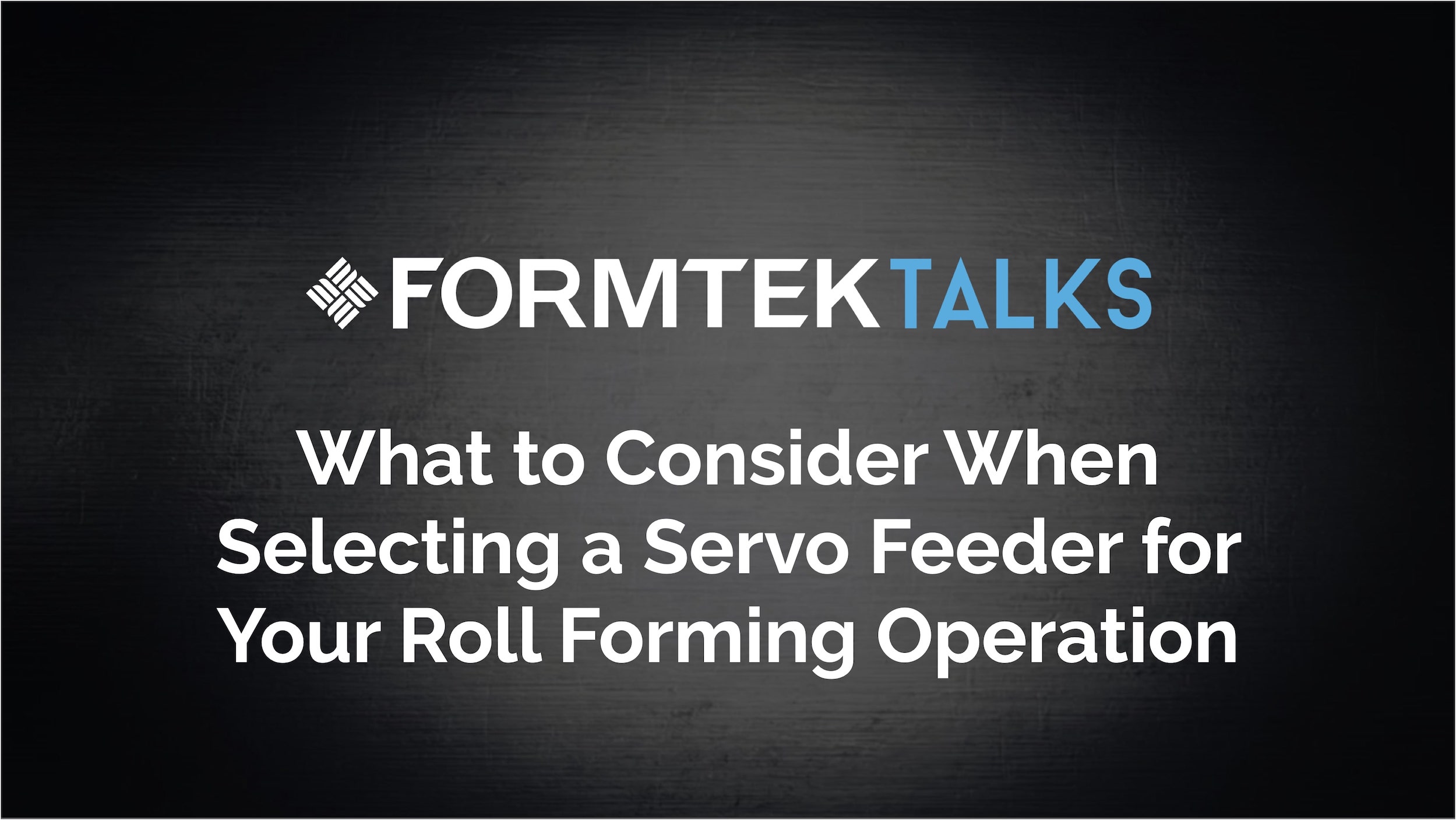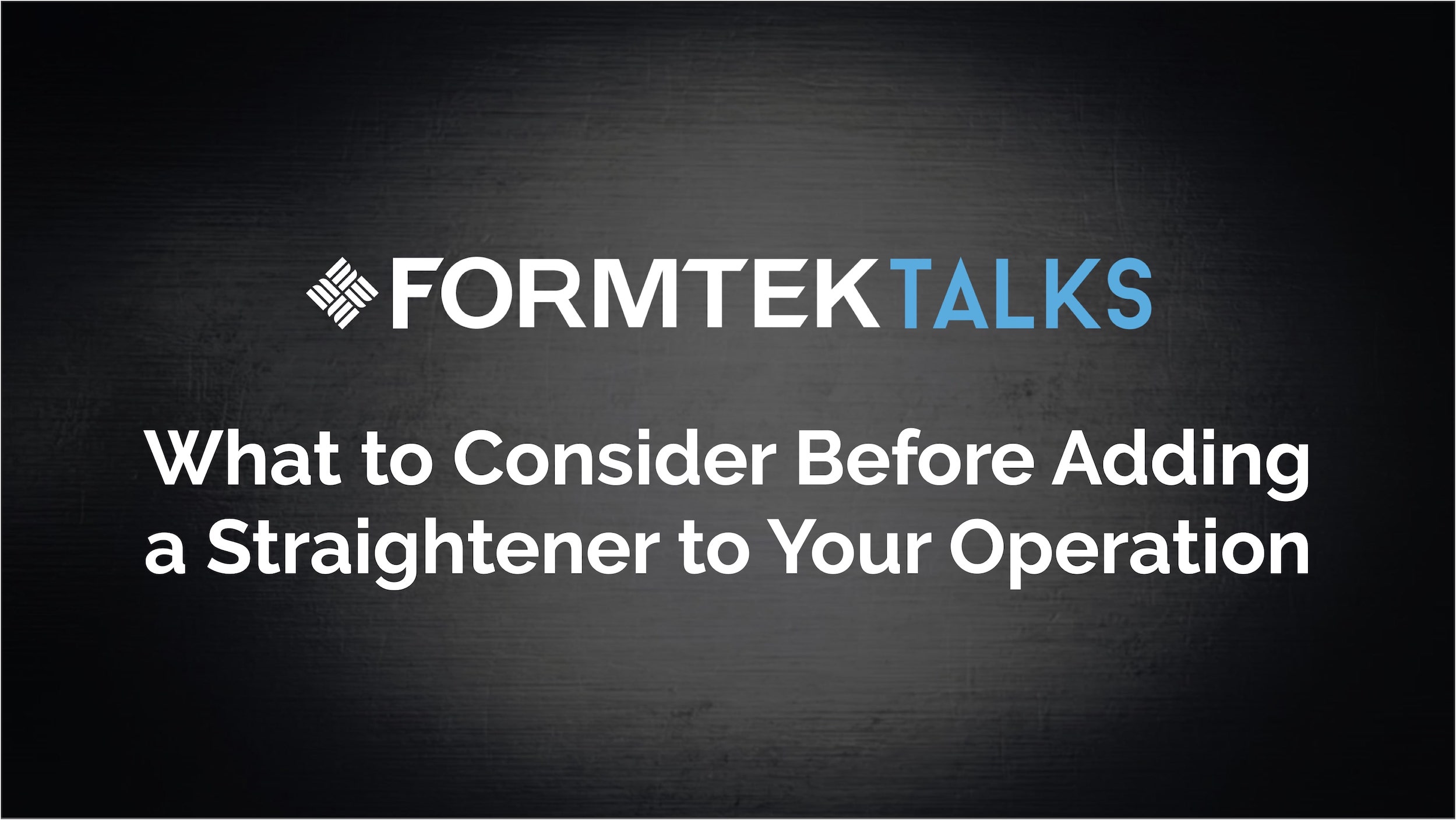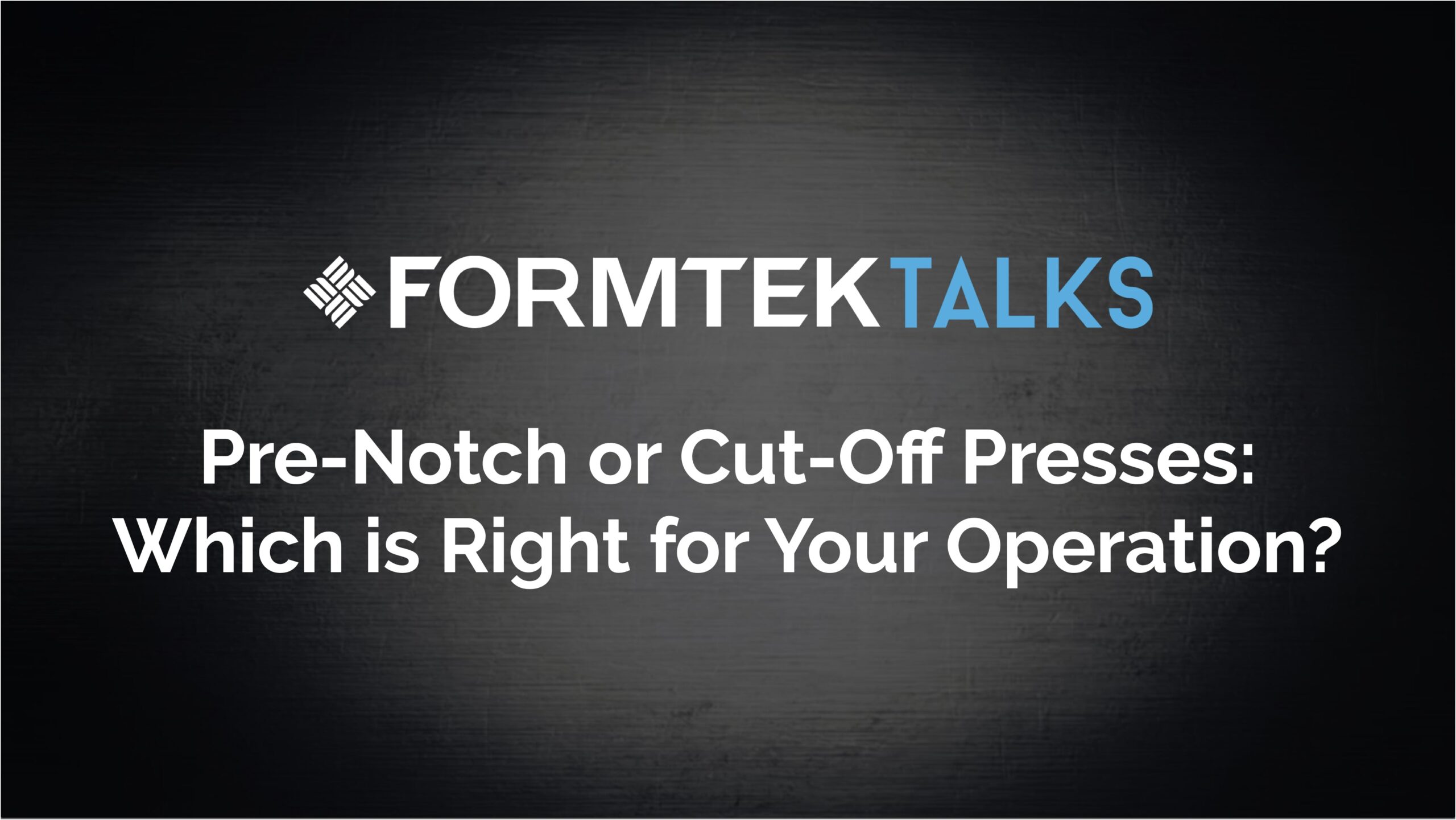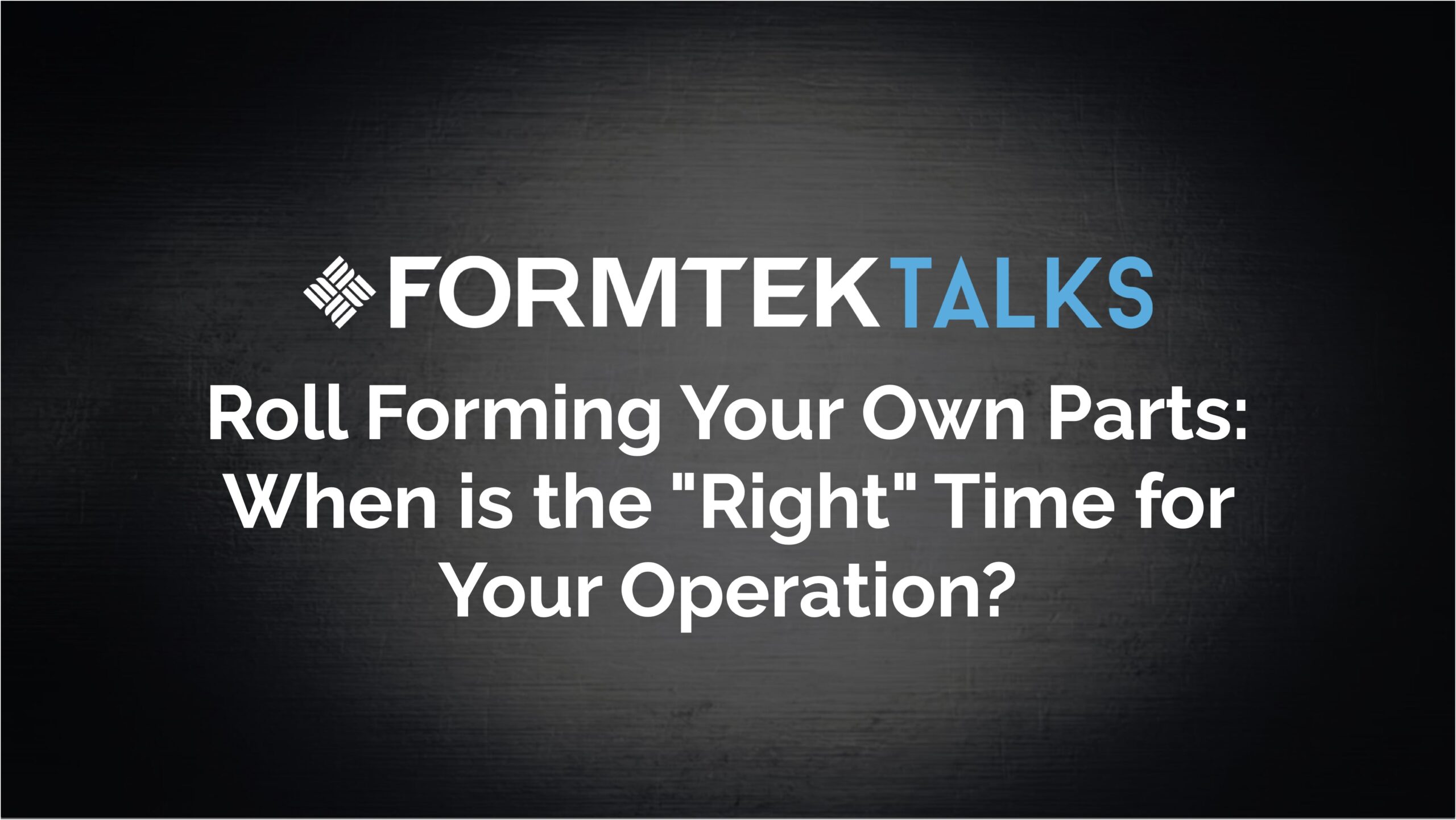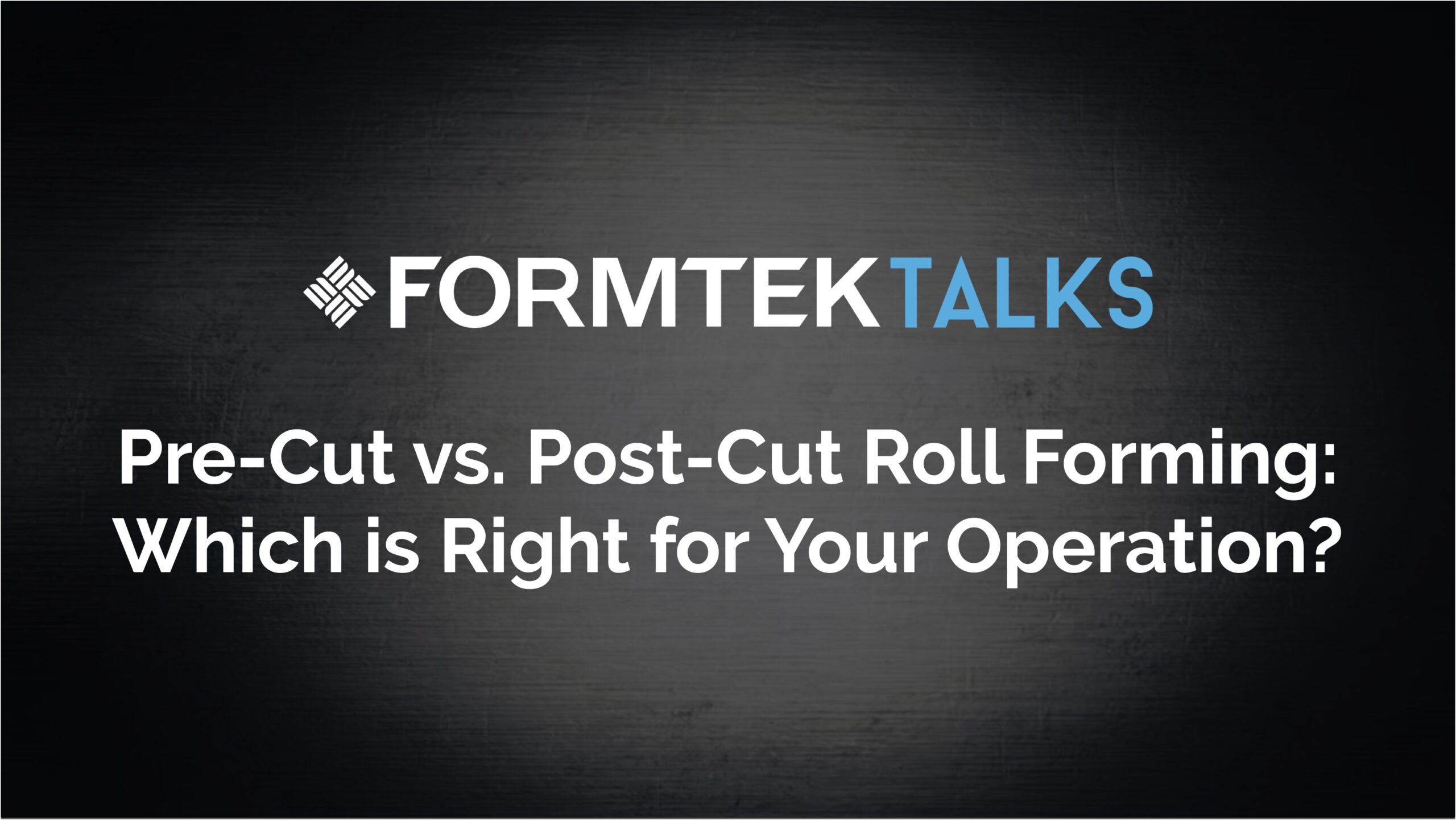Brian:
Excellent. Charlie, in your experience, and you’ve had not only roll forming experience but other strip processing experience in your past life, was there any guidelines that you would always steer customers toward a driven or an undriven coil reel? Was there something else there? Because we’ve actually had some applications where we’ll have a driven uncoiler and a straightener just to double up and be super safe and not damage the material or because it’s very thin gauge and we don’t want to stretch the material whatsoever. What’s your experience with that?
Charlie:
Well, outside of roll forming in the steel mill industry, they’re pretty much always driven because they’re always trying to maintain tension zones within the line. So we never really encountered any kind of non-driven uncoiler-
Brian:
Where it was pulling off, [inaudible 00:06:59] off from the straightener. [crosstalk 00:06:59]
Charlie:
Yeah it was… Yeah, no, it was always driven and it was always pulling back. You were always trying to establish tension going into, say, a bridal because all those lines have various tension zones from entry end to process section to exit end. But in the roll forming, you know, with the non-driven I always kind of looked at it as if there was a Servo feeder, you had to go with driven because you didn’t want to take chances slipping through the Servo feeder rolls pulling the inertia of the coil. But when I got into the non-driven, one of the things I kind of always was a little fuzzy on… So even when you say non-driven there’s still a drag device to keep the coil from over-spinning, whether it’s a pneumatic or a mechanical break.
Kevin:
That’s correct.
Charlie:
And how do you know whether you need to go with a pneumatic or a mechanical brake in a non-driven application?
Kevin:
Again, it tends to get more application specific. How you know the difference between the two, I think, is in part at both in line speed and the coil weight in which you’re trying to stop. In this day and age, another convenience and something we’re seeing more and more customers utilizing is what’s called an automatically adjusting break where we’re utilizing a laser sensor that’s going to constantly measure the diameter of that coil and will automatically adjust the brake according to that diameter of the coil. So wear and tear maintenance by the operator or the maintenance personnel is greatly reduced and the longevity of the equipment is enhanced as a result of that.
Charlie:
So when you dynamically adjust the tension using… I assume most cases that’s a pneumatic?
Kevin:
Pneumatic, yes.
Charlie:
Pneumatic brake. That’s based on the difference between the OD and the ID, and when you’re in within a certain range you really don’t need to do compensation?
Kevin:
It’s the difference between the overall OD and as that OD changes, I believe it’s three or four times, through the course of that coil as it depletes. So as you have a fuller coil, you’re going to need more brake pressure to stop that as you get into a smaller coil, less brake pressure accordingly.
Charlie:
Okay.
Brian:
And Kevin tell us a little bit what’s important if somebody’s looking at a driven coil reel application. I would imagine you’d want to know how fast the line is paying off.
Kevin:
Yes, certainly.
Brian:
That we have to keep up. Is there a rule of thumb for… If I say I’m going to be running the roll former at 100 foot per minute, do you automatically say, “Okay, in my mind, I have to assume I got to hit speeds of 120 or 150 to keep up with the roll farmer for feeding it?”
Kevin:
Yes.
Brian:
What’s the rule of thumb there? 25%, 50%?
Kevin:
I believe it’s around 25% and ideally, and especially as you get to the smaller, as the coil winds down or unwind so you have less of a coil on there, the reel’s obviously turning faster so you have to be faster than the rated line of speed. So that’s a calculation that engineering performs in determining, again, a motor size, in that case, to make sure that we are always running faster than the capability of the roll former or whatever piece of equipment may be in front of it.
Brian:
I would imagine another scenario where you might decide driven or undriven would be safety. If somebody has to feed this coil into another piece of a machinery and it’s 20 or 40 inches wide, they would probably opt for… Do they need a full motorized version? Or, I do believe you have like a thread up version as well, which is kind of a form of a driven uncoiler, but it’s not to top speeds, it’s just for helping.
Kevin:
That’s correct. The distance isn’t necessarily a factor of determining whether it’s driven or non. There is a thread up mode on a non-driven straightener that allows you to both unwind the material to feed to the next successive piece of equipment. There is also the ability inherent in that is to rewind equipment back. So if you don’t fully utilize material, you can rewind that quo using that same jog function for rewinding it. The determination whether or not to use a powered reel or a non-powered reel isn’t affected by the overall distance of an application. You can use thread tables in various other means to get the material from point A to point B. And again, having the jog function on a non-motorized reel is what allows you to then feed, again, that next piece of equipment in line.
Brian:
What’s the latest in technology to when you’re looking at a driven coil reel to assess the speed that the material’s being pulled off? It used to be dancer arms.
Kevin:
Correct.
Brian:
Do you still use dancer arms or there’s newer technology out there?
Kevin:
Newer technology, primarily lasers today. Although there are applications, soft lead for batteries would be an example where a loop arm is still utilized, but almost everything has gone to a laser. Photo eyes is another. So if you have a pit, for example, photo eyes on either side of that pit wall to recognize where the material is located, but the premise is the same for whether it’s photo eye or the dancer arm or the laser, it’s measuring the high and the low of that material you never want it touching the floor where it can drag contaminants into a press or a roll forming application and the tooling or you’re going to have a… I lost my train of thought. I’m sorry.
Brian:
Well, if you’re talking about damaging the strip or tight lining.
Kevin:
Oh, Yeah. I’m sorry. [crosstalk 00:12:43]
Kevin:
The voltage basically is what you’re utilizing there. So 0 to 10 volts. So all three of those methods utilized the same methodology as far as making those adjustments. And so the lower you get in into the pit or into the loop, the slower you would go. Even if you’re just slowly creeping along that material, as that material starts to come up in the loop, in order to prevent it from tight lining the reel then has to run faster to put more slack into the loop itself.
Charlie:
Yeah, but wouldn’t the photo eyes, the laser actually, like you said, works on voltage. So it’s dynamically adjusting continually as a loop goes up and down.
Brian:
In small increments.
Charlie:
In small increments. My experience with photo eyes is you have a series of photo eyes. So you have one at the bottom, you have one at the top and one at the middle in the middle. So you don’t really have the control.
Brian:
The finite control maybe?
Charlie:
The finite control that you do with laser that
Kevin:
That is correct. The responsiveness with the laser is far greater. Yes.
Brian:
Is there any drawbacks to using a laser like a reflection on the material or do you have to… Is there any special things you can’t use the laser on, you mentioned lead. Is the reason for that because it’s too soft? Or is it the fact that it has a reflective property and you can’t match that with the laser?
Kevin:
With lead it’s the opposite it’s porous. So getting the feedback from the laser is more challenging.
Brian:
Oh, You can’t get enough reflection?
Kevin:
Correct. I’m not aware of any issues with a laser and having ability with shiny metal materials, painted materials and BOS materials. It doesn’t seem to be impacted by any of those. So I would say overall, no, there aren’t many negative aspects. In fact, there’s usually more positive associated with it than negative. So going back to the sonic age of loop control, that could be affected by outside noise. So if you have a welding machine that’s close to a line that noise, electrical noise, could affect the sonic controlled unit. Cold air. So if you have equipment that’s by an open door in the wintertime it will sense that cold dense air where a laser is impervious to that. So there’s actually more benefits to the laser than there is with most of the other older type of technologies that are out there.
Charlie:
I’ve seen a similar issue with photo electric, with light. If you have a lot of windows in the plant, reflecting off and causing errors with [inaudible 00:15:00].
Kevin:
Oh, I was not aware of that.
Charlie:
In some of the steel mill applications they had highly lit bays and they had reflectivity that would throw off the photoelectric.
Kevin:
I’ll be darned.
Brian:
I know there’s a… You know, when we touched on safety a little bit ago with for threading options that you can use for operators. I know our group tends to use a specific option that Formtek, Maine offers where it’s a called a safety break in case there’s a power outage. Are you seeing a lot of your customers starting to utilize that feature? Because I would think that, that would almost be mandated. That if you lose either air pressure or power the break cinches up the uncoiler, essentially.
Kevin:
The short answer to your question is yes, we are seeing that more. More customers are becoming safety oriented. It comes down to a matter of cost. If you are an operation that uses line 24/7 that’s certainly easier to cost to justify. If you are a smaller shop that runs one shift and you have more personnel that are available to tend to it, as we go for forward more and more customers are requesting automation. So by having those functions that are done automatically by job number or whatever means is becoming the more preferred method.
Brian:
Anything else that you’d like to add versus driven, or undriven?
Kevin:
Not as necessarily as it pertains to driven or non-driven but I would add one of the variations on the reels is the utilization of a single versus a double reel.
Brian:
Oh, that’s an excellent point.
Kevin:
So you have a single mandrel that you’re either going to load or unload a coil off of. You’re going to run out that coil. If not, you’re going to be rewinding it, rebanding it, and removing it. The benefit of a double end coil, you have an online and an offline side to that coil. As a result of that, you can be loading or unloading the offline side of that coil while you’re running or threading up the online side of that coil. So it shortens the amount of downtime and the throughput should therefore be increased as a result of the increase in up time. So if you are a location that uses a lot of partial coils, does a lot of changeovers, certainly a double reel is very advantageous for that.
Brian:
And all the features that we’ve talked about can be applied to the double coil reel world as well. You can have safety breaks, thread up drives, you know, motorized payoff, all of that can be applied.
Kevin:
Absolutely [crosstalk 00:17:36].
Kevin:
That’s correct.
Brian:
Yeah, I agree. We… You know, a lot of our role forming systems customers are starting to add more and more, or upgrade more and more to the double coil reel so that’s definitely a good feature. Charlie, what have you seen? Are there certain features you’re always starting to add?
Charlie:
Well, safety feature for sure, you know, with the break. But beyond that customers are kind of up and down on whether they want single or double reel. With the high production lines, you know, obviously they’re the high speed lines, they’re going with that one because that’s really what they’re after is, you know, low downtime. But there’s still quite a few single real applications.
Charlie:
One thing I did see recently, which I hadn’t seen in a long time was requests for closed face mandrels. Which basically you’ve got contact with the idea of the coil all the way around the circumference as opposed to some of your more typical ones where it’s like three arms and you’ve got, you know, contact-
Brian:
Or three mandrels you mean.
Charlie:
Yeah. Yeah, three expanding mandrels but there’s a gap between those segments. And I’m not sure what’s exactly driving that but it is, a quite a bit, of an upcharge when you go with the closed face?
Kevin:
I’m sorry. There’s a couple of different ways. [inaudible 00:18:56] have on smaller systems usually 6,000 pounds and under it’s a four arm system. And what tends to happen is you deplete the coil. The coil itself wants to egg shape from the ID out. And obviously thinner gauge materials can be adversely affected by that. So then you get into, on the larger coils, the three drum mandrel, like you said, does allow space. And in some cases that space is utilized for loading. So using a C-hook to load a coil, as an example, you have to have a gap in between those mandrel shoes to get that hook in there and out of there. Or a sling would be another one. To go to a full radius mandrel, the main intent there is, as you said, is to not deform the ID of that coil. And what we call a pumpkin tooth style, which is what allows those mandrel shoes to overlap one to another and give you more of a 360 degree protection against that is the fact that you’re not going to deform those thin gauge materials and take the last, maybe two, inches of a coil and deform it to the point where it becomes non-usable or scrap material.
Charlie:
Yeah. Does that limit the expansion range? Close face, as opposed to the three segment.
Kevin:
It can. As a general rule, no there’s enough gap in there to allow a traditional four to six inch expansion and contraction range. But it certainly can if you’ve got… It’s usually going to be customer driven. If they get the material on cores, for example, there’s a lot less variation on what that ID range is going to be versus if it were going to be on a non-cored coil.
Charlie:
Mm-hmm (affirmative).
Brian:
All right. On behalf of Kevin and Charlie, my name is Brian Kopack, I’d like to thank you for tuning in to this edition of Formtek Talks. And we look forward to seeing you on the next episode.














